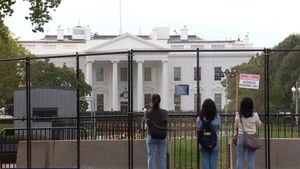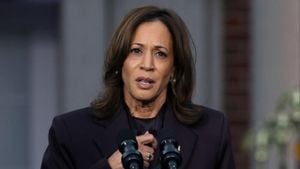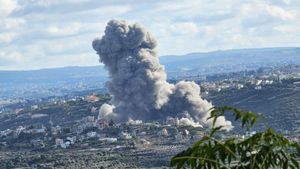Tehran, Iran—A wave of economic turmoil has engulfed Iran as the rial, the country’s national currency, plunged to its lowest value ever. This financial crisis coincided with recent developments surrounding the U.S. elections, particularly the anticipated victory of Donald Trump. Observers have noted this decline is not merely coincidental; it reflects the tense geopolitical climate stirred by Trump's policies during his previous presidency, which many Iranians widely perceived as antagonistic.
Within days of Trump's election win, the rial sharply dropped to 99,000 to the U.S. dollar from around 80,000, showcasing how sensitive the Iranian economy is to U.S. political outcomes. For ordinary Iranians, this shift has already started to hit hard, making imported goods drastically more expensive and pushing inflation rates back toward double digits. The volatility of the currency has prompted fears about the country’s economic stability and has intensified the struggles faced by average Iranians.
"The rial's freefall is alarming, as it worsens already existing economic challenges, including inflation and unemployment, impacting day-to-day life for many families," remarked economic analyst Haleh Esfandiari. With the rial's continuous depreciation, many citizens are struggling to make ends meet; prices for basic food items have begun to soar beyond what many can afford.
This economic climate breeds uncertainty, with citizens expressing worry about the future under Trump's leadership. Economic sanctions, which were already crippling Iran’s economy, may see increased severity, particularly with Trump's stance on negotiations with the country. The general sentiment is one of trepidation, with many recalling the sanctions and pressures put on Iran during Trump's first term.
Tehran streets reflect this apprehension. Many shopkeepers are compelled to raise prices, clearly feeling the pressure as customers reel from the cost of living. "Our prices are based on the dollar, and with the rial falling, we must increase prices to sustain our livelihoods," one shopkeeper lamented. The fallout from this depreciation has catalyzed protests among citizens who are demanding economic reforms and relief from high prices.
Meanwhile, the Iranian government is scrambling to stabilize the situation, perhaps recognizing the potential for unrest if the economic crisis continues unabated. Measures are reportedly underway to bolster the rial, including interventions to control the dollar's value through market actions. Still, economists remain skeptical about the sustainability of these measures, pointing out they may provide only temporary relief.
Trade analysts note the rial's instability might hinder foreign investment at a time when Iran is seeking new economic partnerships to invigorate its economy. Though Trump’s election victory was met with fear within Iran, the government appears to be adopting strategies to counteract economic fallout. These efforts include seeking support from allies and pushing for domestic reforms.
One significant focus of the Iranian government’s efforts is on bolstering local industries which have suffered due to increased reliance on imported goods. Many anticipate these strategies might take time to yield tangible results, as significant reform often encounters bureaucratic hurdles and political resistance.
For the Iranian populace, the struggle feels especially pressing now, with many reminiscences of past hardships surfacing. The link between U.S. foreign policy shifts and domestic economic wellbeing has been made all too clear, driving home the reality of geopolitical interdependencies. Amidst these tensions, citizens are left questioning the direction their country is headed.
While some may take solace knowing change is part of history, the uncertainty following Trump's ascension to the presidency has left many Iranians anxious about what is to come. With economic recovery seeming distant, the larger question arises: how will Iran navigate these turbulent waters?



